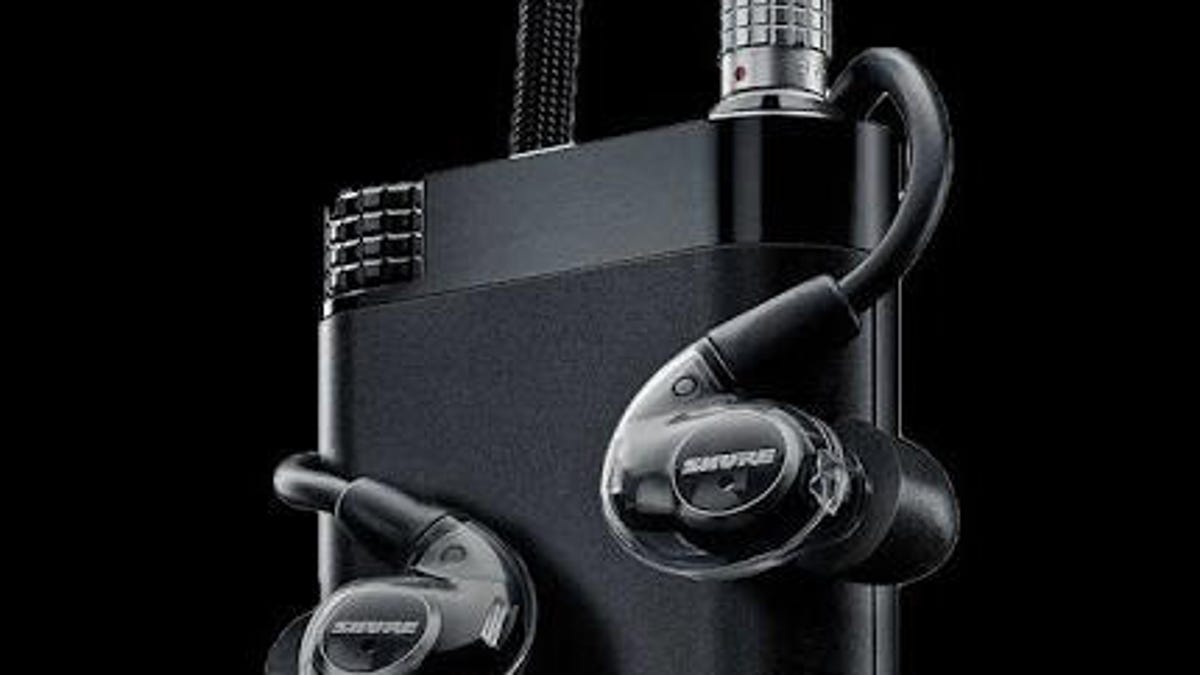Shure's 'ultimate earbud' gets a $1,000 price cut
Ears-on with the $1,999 Shure KSE1200, the "cheap" version of the brilliant KSE1500 electrostatic in-ear headphone.

The Shure KSE1200 electrostatic in-ear headphone amplifier system.
Some headphone audiophiles crave extreme dynamic punch or ear-massaging bass. Others are happiest only when their music sounds fully transparent. For the latter group, the king of clarity arrived in 2015 with Shure's KSE1500 electrostatic in-ear headphone amplifier system.
The sound was revelatory, but the best stuff never comes cheap, especially in audiophile land. The KSE1500 sells for $2,999 in the US, £2,234 in the UK and AU$3,999 in Australia. The KSE1500 was the first, and only, of its kind until now.
Shure has followed up with a somewhat more affordable set, the KSE1200. While it features the exact same electrostatic in-ear headphones, it comes with a different amp and sells for "just" $1,999 (£1,769, AU$2,999).
Unlike dynamic and planar magnetic headphones, the KSE1200 electrostatic uses completely different tech: an ultra lightweight diaphragm suspended between two charged "stators" running 200 volts, which is provided by the KSE1200's power amplifier. Full-size electrostatic headphones with much higher voltages have been around since the early 1960s, and they are perfectly safe.
Both Shure electrostatics are sold as headphone amp systems -- you have to use the included amps, as no other brand is compatible with these earpieces. So what separates the two KSE models? The KSE1500's amp features a built-in digital converter and adjustable equalization; the KSE1200's amp doesn't. That approach makes more sense to me, because if you're dropping this kind of cash on an in-ear headphone, you're a die-hard audiophile, and as such you'd probably rather buy a separate digital converter. I know I would.
The KSE1200's black anodized aluminum amp is a solid piece of work. It measures just 3.7 by 2.1 by 0.8 inches (93 by 53 by 21mm) and weighs 5.5 ounces (155 grams). And its rear end has a Micro-USB charging port. Upfront there's a volume control and a headphone jack that locks the cable's plug into place. The headphone cable is thick, but I still found comfort above average. Isolation for external noise was excellent. The battery-powered amp has a rated play time of up to 12 hours.
I played the KSE1200 first with my iPhone 6S, and the sound was pretty spectacular. I had the Shure's amp plugged into the iPhone's 3.5mm headphone jack. To take the sound to the next level I hooked up my $599 Chord Mojo digital converter to the iPhone's Lightning connector and the Mojo to the Shure amp.
In every case it was the KSE1200's extreme clarity, matched with its sweet and natural tone that made it hard to focus on taking notes on sound quality. It was that good.
So what does a $2,000 earbud sound like?
Collocutor's new EP Black Satin of modern jazz with its jagged lines and nervous grooves fully energized the KSE1200, and the immediacy of the sound made me sit up and take notice. What's more I could listen quietly and still hear all of this incredible detail. You don't have to play the KSE1200 loud to hear it at its best.
Audeze LCDi4 in-ear headphones.
The KSE1200 provides a good deal of isolation from external noise, which lets you more easily hear the most subtle, really quiet sounds in your music like the singer's breaths, musicians turning pages of the score, or the ambiance of the recording session venue. The KSE1200 provides a you-are-there experience you can't get with other in-ear headphones.
Next violinist Paul Giger's Chartres album, an improvised work recorded during summer solstice 1988 inside the crypt and upper church of the cathedral of Chartres, France, and the KSE1200 put me there in a virtual way. That's what the very best headphones do. With speakers, the room's influence always makes itself heard; with headphones, the sound literally goes to your head!
For comparison's sake I brought out a set of Audeze LCDi4 planar magnetic in-ear headphones ($2,495, £2,399 or AU$3,499). They are extraordinary. The LCDi4 headphone doesn't come with an amp, but unlike the KSE1200 it can be plugged directly into my iPhone 6S' headphone jack or any headphone amp.
Also, since the LCD-4s are open-back headphones, the sound was more spacious and open than the KSE1200. Ah, but since the LCDi4 doesn't do a thing to hush external noise, it's pretty rough unless you're listening in a quiet room. The KSE1200's noise isolation helps keep some of the noise at bay. The LCDi4's sound wasn't as clear -- the KSE1200s were more like being there.
Still, the LCDi4 is more dynamically powerful, with more robust bass and therefore is better suited to rock. The KSE1200 was at its best with acoustic music. Neither can deliver the dynamic punch of a top performing full-size, over-the-ear headphone, but the LCDi4 bass impact handily exceeded the KSE1200's. These two headphones are both excellent, but will appeal to different buyers searching for the best in-ear headphones.
As I said at the top of this review, the Shure KSE1200 will thrill well-heeled audiophiles seeking ultimate transparency and naturalness. If that describes you, the KSE1200 deserves a serious audition.
More from The Audiophiliac: Tales of high-end audio obsessions.
Best headphones for 2018: CNET's current top picks at all price levels.

